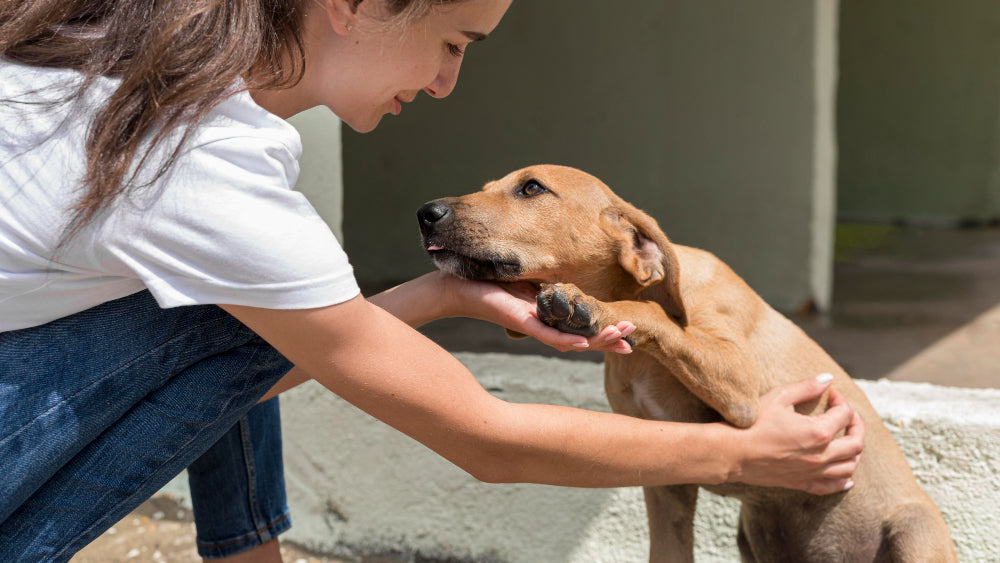
Preparing Your Home for a Shelter Pet
Share
Preparing Your Home for a Shelter Pet
Opening your heart and home to a shelter pet is a rewarding experience, but ensuring a smooth transition requires preparation. This guide covers essential steps to create a welcoming space for your new furry friend, including tips for choosing food, toys, and bedding,
1. Creating a Safe Haven:

The first few days in your home can be overwhelming for a shelter pet. Designate a quiet, enclosed space as their personal sanctuary. This could be a spare room, a crate with a comfy bed, or a corner cordoned off with baby gates. Ensure the space is free from drafts and loud noises, providing a sense of security and calming them down. Consider placing familiar scents within, like an old t-shirt with your smell or a blanket from the shelter, to offer comfort during this critical adjustment period.
2. Food and Glorious Food:

Dietary adjustment is another big transition for adopted pets. Ask the shelter what food they were accustomed to and stick to it for at least a week. This minimizes digestive upset and allows them to settle in comfortably. Gradually introduce their new food, mixing it with the familiar one in increasing proportions over a few days. Remember, switching food too quickly can lead to stomach issues.
3. Toy Time Fun:

Shelter pets haven't always had an abundance of playthings. Provide enriching toys to keep them entertained and stimulate their minds. Option for a variety of textures and types, including chew toys for teething pups, plush toys for cuddling, and interactive puzzles to keep them occupied. Rotate toys regularly to maintain the element of surprise and prevent boredom.
4. The Importance of Bedding:

A plush, comfortable bed is essential for your pet's well-being. Choose a size that accommodates them comfortably and allows them to stretch out. Option for machine-washable covers for easy cleaning, especially if you're welcoming a rescue with potential accidents. Consider their preferences too – some may prefer fluffy beds, while others might enjoy cooler options like mats.
5. Setting Boundaries and Routines:
Dogs thrive on routine and clear boundaries. Establish feeding times, walks, and playtime schedules as soon as possible. This fosters a sense of predictability and reduces anxiety. Designate areas for "off-limits" zones and consistently address unwanted behaviors like jumping or chewing. Positive reinforcement with treats and praise is key for effective training.
We, at Roving Pets, understand the joy and challenges of welcoming a shelter pet into your life. Our range of high-quality pet products is designed to support you and your furry friend every step of the way, from ensuring a smooth transition to creating a lifetime of shared
